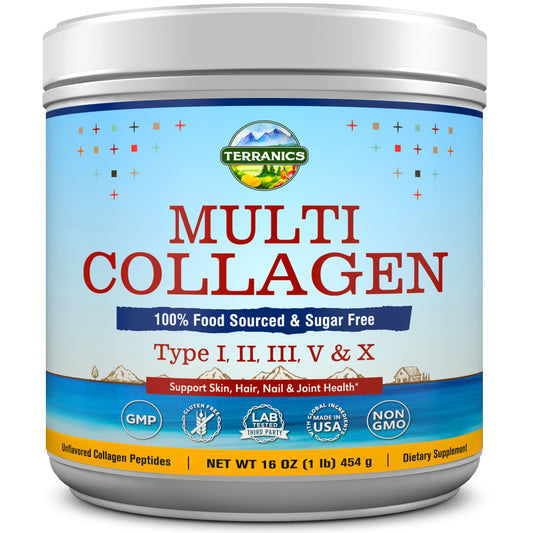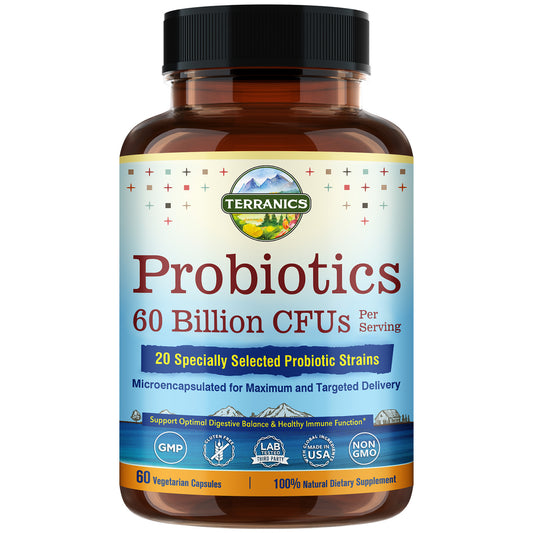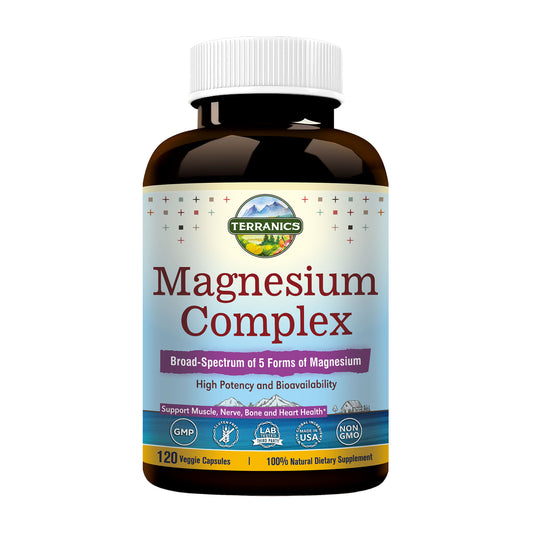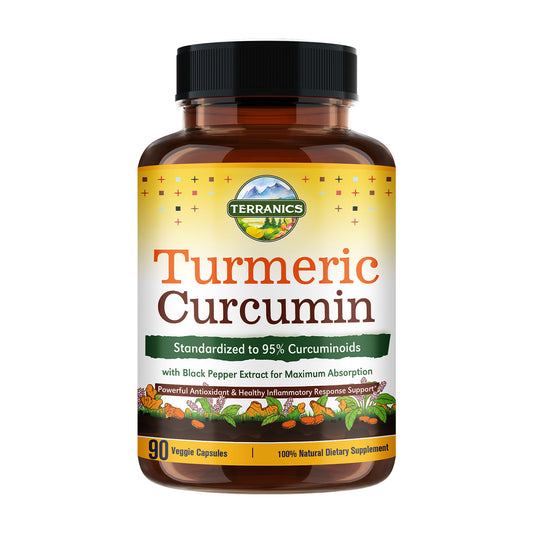
When illness strikes, taking care of yourself becomes paramount. Proper nutrition plays a vital role in supporting your immune system, aiding in recovery, and promoting overall well-being. However, when you're feeling under the weather, it can be challenging to prioritize healthy eating. In this comprehensive blog post, we will explore practical tips, nourishing food choices, and additional strategies to help you feed yourself well when you're feeling sick, allowing you to optimize your recovery and regain your vitality.
Understanding the Importance of Nutrition During Illness

The Role of Nutrition in Supporting the Immune System
Proper nutrition plays a crucial role in supporting and strengthening the immune system, especially during times of illness. The immune system is responsible for defending the body against harmful pathogens, such as bacteria, viruses, and parasites, that can cause infections and diseases. When the immune system is compromised or weakened, the body becomes more susceptible to these pathogens, making it harder to recover from illness.
Nutrition provides the essential nutrients, vitamins, and minerals that are necessary for the optimal functioning of the immune system. Here are some key ways in which nutrition supports the immune system:
Antioxidant support: Antioxidants, such as vitamins A, C, and E, help protect the cells of the immune system from damage caused by free radicals. Free radicals are unstable molecules that can harm the immune cells and weaken their ability to fight off infections. Foods rich in antioxidants, including fruits, vegetables, nuts, and seeds, can help boost the immune system's resilience.
Protein for immune cell production: Protein is essential for the production and maintenance of immune cells, including antibodies, which are proteins that help identify and neutralize harmful pathogens. Including protein-rich foods such as lean meats, poultry, fish, legumes, and dairy products in your diet can support the production of immune cells and enhance their effectiveness.
Micronutrient support: Several vitamins and minerals play vital roles in immune function. For example, vitamin D helps regulate the immune response and is crucial for the activation of immune cells. Zinc is involved in various immune processes, including the development and function of immune cells. Including a variety of nutrient-dense foods in your diet, such as fortified dairy products, seafood, whole grains, and leafy green vegetables, can help ensure an adequate intake of these essential micronutrients.
Gut health and the immune system: The gut microbiota, the trillions of bacteria residing in our digestive system, plays a significant role in immune function. A healthy gut microbiota helps regulate and balance the immune response. Consuming a diet rich in fiber, prebiotics, and probiotics can promote a diverse and healthy gut microbiota, supporting a robust immune system.
Building a Foundation of Hydration and Nourishment

Hydration Strategies for Recovery
Hydration is a fundamental aspect of maintaining overall health and supporting the body's recovery processes. When the body is ill or recovering from an illness, proper hydration becomes even more crucial. Here are some hydration strategies that can aid in the recovery process:
Drink plenty of water: Water is the primary source of hydration for the body. Adequate water intake helps maintain the balance of bodily fluids, allowing essential nutrients to be transported to cells and waste products to be eliminated efficiently. During illness, the body may lose fluids through sweating, fever, or increased mucus production. It is important to drink water regularly to replenish these lost fluids.
Replenish electrolytes: Electrolytes are minerals that help regulate various bodily functions, including hydration. When recovering from an illness, especially if there has been vomiting, diarrhea, or excessive sweating, electrolyte levels may become imbalanced. Consuming electrolyte-rich beverages or oral rehydration solutions can help restore electrolyte balance and support proper hydration. These beverages often contain essential electrolytes such as sodium, potassium, and magnesium.
Include hydrating foods: In addition to drinking fluids, incorporating hydrating foods into the diet can contribute to overall hydration. Foods with high water content, such as fruits (e.g., watermelon, oranges, and grapes), vegetables (e.g., cucumbers and lettuce), and soups, can provide both water and essential nutrients. These foods can help replenish fluids and promote hydration during the recovery process.
Monitor urine color: Monitoring the color of urine can provide insights into hydration levels. Pale yellow or clear urine generally indicates proper hydration, while dark-colored urine may suggest dehydration. By paying attention to urine color, individuals can gauge their hydration status and adjust their fluid intake accordingly.
Soups and Broths for Healing
Soups and broths have long been recognized for their healing properties and are commonly recommended during illness or recovery. Here are some reasons why soups and broths can be beneficial for healing:
Hydration: Soups and broths are primarily liquid-based, making them an excellent source of hydration. When recovering from an illness, staying hydrated is crucial for supporting the body's healing processes. The warm temperature of soups and broths can also provide comfort and soothing effects, especially for individuals with sore throats or congestion.
Easy to digest: Illnesses can often affect appetite and digestion. Soups and broths are typically light and easy to digest, requiring less energy and effort from the digestive system. They provide essential nutrients, such as vitamins, minerals, and amino acids, in an easily absorbable form. This makes soups and broths a suitable option for individuals with decreased appetite or digestive issues during recovery.
Nutrient-rich: Soups and broths can be prepared using a variety of ingredients, including vegetables, lean meats, poultry, fish, legumes, and herbs. These ingredients contribute to a nutrient-rich profile, providing essential vitamins, minerals, antioxidants, and phytochemicals. For example, chicken soup is often praised for its potential to alleviate symptoms of the common cold due to its anti-inflammatory properties and immune-supportive nutrients.
Comforting and soothing: Beyond their nutritional benefits, soups and broths can also provide a sense of comfort and well-being during the recovery process. The warmth, aroma, and flavors of these dishes can help stimulate the appetite, provide emotional comfort, and promote relaxation.
The Power of Herbal Infusions
Herbal infusions, also known as herbal teas or tisanes, have been used for centuries for their potential healing properties. These infusions are made by steeping herbs, flowers, or other plant materials in hot water. Here are some reasons why herbal infusions can be powerful allies in the healing process:
Calming and relaxing effects: Many herbal infusions have calming and relaxing effects on the body and mind. For example, chamomile and lavender infusions are known for their soothing properties and can help promote relaxation, reduce stress, and improve sleep quality. These calming effects can be particularly beneficial during illness or recovery when rest and relaxation are essential.
Immune support: Certain herbs and botanicals used in herbal infusions have immune-supportive properties. For instance, echinacea and elderberry infusions are often consumed to boost the immune system and help fight off infections. These infusions may contain bioactive compounds that can enhance immune function and support the body's natural defense mechanisms.
Digestive support: Many herbal infusions are known for their digestive benefits. Peppermint, ginger, and fennel infusions, for example, can help soothe an upset stomach, reduce bloating, relieve indigestion, and promote healthy digestion. These infusions may have carminative properties, which means they can help alleviate gas and aid in the digestive process.
Antioxidant and anti-inflammatory effects: Herbal infusions can be a rich source of antioxidants, which help protect the body's cells from damage caused by harmful free radicals. Certain herbs, such as green tea, rooibos, and hibiscus, are known for their high antioxidant content. Additionally, some herbal infusions, like turmeric or chamomile, possess anti-inflammatory properties that can help reduce inflammation in the body.
Hydration and detoxification: Herbal infusions are an excellent way to increase fluid intake and promote hydration. Staying hydrated is important for supporting the body's detoxification processes, as it helps flush out toxins and waste products. Herbal infusions, such as dandelion or nettle, are also believed to have mild detoxifying effects, supporting the body's natural detox mechanisms.
Nutrient-Dense Foods for Optimal Recovery

Immune-Boosting Fruits and Vegetables
Fruits and vegetables are essential components of a nutrient-dense diet, and they play a vital role in supporting optimal recovery. Here are some immune-boosting fruits and vegetables that can aid in the healing process:
Citrus fruits: Citrus fruits, such as oranges, grapefruits, lemons, and limes, are rich in vitamin C. Vitamin C is known for its immune-boosting properties as it helps stimulate the production of white blood cells, which are key players in the immune system. Including citrus fruits in your diet can support immune function and enhance the body's ability to fight off infections.
Berries: Berries, including strawberries, blueberries, raspberries, and blackberries, are packed with antioxidants and phytochemicals that have immune-enhancing properties. These compounds help protect the body against cellular damage and inflammation, supporting a healthy immune system. Berries are also rich in fiber, which promotes gut health—an essential aspect of immune function.
Leafy green vegetables: Leafy greens like spinach, kale, Swiss chard, and broccoli are excellent sources of vitamins A, C, and E, as well as other antioxidants and minerals. These nutrients help strengthen the immune system and protect against oxidative stress. Leafy greens are also rich in fiber, which aids in digestion and supports overall health.
Garlic and onions: Garlic and onions contain compounds that have antimicrobial and immune-boosting properties. They are particularly known for their potential to help fight off infections and support respiratory health. Including garlic and onions in your meals can add flavor and provide immune-enhancing benefits.
Bell peppers: Bell peppers, especially the brightly colored ones like red, orange, and yellow, are rich in vitamin C and other antioxidants. They contribute to a strong immune system and help protect the body against oxidative damage. Bell peppers can be enjoyed raw in salads, roasted, or sautéed in various dishes.
Protein-Rich Foods for Tissue Repair
Protein plays a crucial role in tissue repair and recovery, making it essential to include protein-rich foods in your diet during the healing process. Here are some protein sources that can support tissue repair:
Lean meats: Lean meats, such as chicken breast, turkey, lean cuts of beef, and pork tenderloin, are excellent sources of high-quality protein. They provide essential amino acids that are necessary for tissue repair and rebuilding. Choose lean cuts and opt for healthier cooking methods like grilling, baking, or broiling to minimize added fats.
Fish and seafood: Fish and seafood, such as salmon, tuna, trout, shrimp, and mussels, are not only rich in protein but also provide omega-3 fatty acids. Omega-3 fatty acids have anti-inflammatory properties and can support the healing process. Including fish and seafood in your diet can provide protein, healthy fats, and other essential nutrients.
Beans and legumes: Beans and legumes, including lentils, chickpeas, black beans, and kidney beans, are plant-based protein sources that are also high in fiber. They offer a wide range of nutrients, including vitamins, minerals, and antioxidants. Incorporating beans and legumes into meals can provide protein for tissue repair while promoting overall health.
Greek yogurt and cottage cheese: Greek yogurt and cottage cheese are dairy products that are rich in protein. They also provide calcium, which is essential for bone health. Greek yogurt and cottage cheese can be enjoyed on their own or used as ingredients in smoothies, salads, or as toppings for various dishes.
Nuts and seeds: Nuts and seeds, such as almonds, walnuts, chia seeds, and flaxseeds, are plant-based protein sources that also offer healthy fats and other beneficial nutrients. They can be added to meals, snacks, or used as toppings for salads and yogurt to increase protein intake and support tissue repair.
Incorporating Healthy Fats for Healing
Healthy fats are essential for the body's healing process as they provide energy, support nutrient absorption, and have anti-inflammatory properties. Here are some ways to incorporate healthy fats into your diet for optimal recovery:
Avocado: Avocados are rich in monounsaturated fats, which can help reduce inflammation and support heart health. They are also a good source of vitamin E, an antioxidant that promotes skin health and tissuerepair. Add sliced avocado to salads, spread it on whole grain toast, or blend it into smoothies for a creamy and nutritious addition.
Olive oil: Olive oil is a healthy fat that contains monounsaturated fats and antioxidants. It can be used as a dressing for salads, drizzled over cooked vegetables, or used as a cooking oil for sautéing and roasting.
Nuts and seeds: Nuts and seeds, such as almonds, walnuts, chia seeds, and flaxseeds, are rich in healthy fats, including omega-3 fatty acids. They can be eaten as a snack, added to salads or yogurt, or used as toppings for various dishes to increase healthy fat intake.
Fatty fish: Fatty fish like salmon, mackerel, sardines, and trout are excellent sources of omega-3 fatty acids, which have anti-inflammatory properties. Include fatty fish in your diet a few times a week to benefit from their healthy fats and other nutrients.
Coconut products: Coconut oil, coconut milk, and coconut meat contain medium-chain triglycerides (MCTs), which are easily digestible fats that can provide a quick source of energy. Use coconut oil for cooking, add coconut milk to smoothies or curries, and enjoy coconut meat as a snack or in recipes.
Seeds and nut butter: Seed and nut butters, such as almond butter, peanut butter, and sunflower seed butter, are delicious and convenient sources of healthy fats. Spread them on whole grain bread, add them to smoothies, or use them as a dip for fruits and vegetables.
Whole Grains for Sustained Energy
Whole grains are a valuable source of complex carbohydrates, fiber, vitamins, and minerals. They provide sustained energy and support overall recovery. Here are some whole grains that you can incorporate into your diet:
Quinoa: Quinoa is a versatile and nutritious whole grain that is rich in protein, fiber, and various vitamins and minerals. It can be used as a base for salads, added to soups and stews, or enjoyed as a side dish.
Brown rice: Brown rice is a whole grain that contains more fiber, vitamins, and minerals compared to refined white rice. Use brown rice as a side dish, in stir-fries, or as a base for grain bowls.
Whole wheat: Whole wheat products, such as bread, pasta, and couscous, are made from the entire grain, including the bran, germ, and endosperm. They provide more fiber and nutrients compared to refined wheat products. Look for whole wheat options when choosing bread, pasta, and other grain-based products.
Oats: Oats are a great source of soluble fiber, which can help regulate blood sugar levels and promote a healthy digestive system. Enjoy oatmeal for breakfast, use oats in baking recipes, or make overnight oats for a convenient and nutritious meal.
Barley: Barley is a whole grain that is high in fiber and provides a good amount of vitamins and minerals. It can be used in soups, stews, salads, or as a substitute for rice in various dishes.
Buckwheat: Despite its name, buckwheat is not a type of wheat but a pseudocereal. It is gluten-free and rich in fiber, protein, and essential nutrients. Buckwheat can be used to make pancakes, porridge, or added to salads.
Self-Care and Additional Strategies for a Speedy Recovery
Rest and Prioritizing Self-Care
Rest and self-care are essential aspects of a speedy recovery. Here are some strategies to help you rest and prioritize self-care during the recovery process:
Adequate sleep: Getting enough sleep is crucial for the body's healing and recovery. Aim for 7-9 hours of quality sleep each night. Create a soothing bedtime routine, establish a comfortable sleep environment, and avoid electronic devices before bed to promote better sleep.
Relaxation techniques: Incorporate relaxation techniques into your daily routine to reduce stress and promote relaxation. This can include deep breathing exercises, meditation, mindfulness, or engaging in activities that you find calming and enjoyable, such as reading, listening to music, or taking a warm bath.
Nutrition and hydration: Pay attention to your nutritional needs and ensure you are nourishing your body with nutrient-dense foods. Include a variety of fruits, vegetables, lean proteins, whole grains, and healthy fats in your meals. Stay hydrated by drinking an adequate amount of water throughout the day.
Self-care activities: Engage in activities that bring you joy and promote relaxation. This can include hobbies, such as painting, gardening, playing an instrument, or spending time in nature. Take breaks to engage in self-care activities that help you recharge and reduce stress.
Time management: Prioritize your tasks and responsibilities to create a balanced schedule that allows for rest and self-care. Delegate tasks when possible and learn to say no to unnecessary commitments to avoid overexertion and burnout.
Gentle Movement and Exercise
While rest is crucial during the recovery process, gentle movement and exercise can also play a beneficial role. Here are some strategies for incorporating gentle movement and exercise into your recovery routine:
Consult your healthcare provider: Before starting any exercise regimen, consult with your healthcare provider to ensure it is safe and appropriate for your specific condition and stage of recovery. They can provide guidance and recommend exercises that are suitable for your needs.
Walking: Walking is a low-impact exercise that can be easily modified based on your fitness level and recovery progress. Start with short walks and gradually increase the duration and intensity as you feel comfortable. Walking can help improve circulation, boost mood, and promote overall well-being.
Stretching: Gentle stretching exercises can help improve flexibility, relieve muscle tension, and promote relaxation. Focus on stretching major muscle groups, such as the neck, shoulders, back, and legs. Perform each stretch slowly and hold it for 15-30 seconds without bouncing or causing pain.
Yoga or tai chi: Yoga and tai chi are gentle forms of exercise that combine movement, stretching, and mindfulness. These practices can help improve balance, flexibility, and promote relaxation. Look for beginner or gentle classes that cater to individuals with different fitness levels and abilities.
Rehabilitation exercises: If you are recovering from an injury or surgery, your healthcare provider may prescribe specific rehabilitation exercises to aid in your recovery. These exercises are designed to target affected areas, improve strength, flexibility, and restore function. Follow your provider's instructions and perform the exercises as recommended.
Seeking Emotional Support
Emotional support is crucial during the recovery process as it can positively impact your mental well-being and overall recovery. Here are some strategies for seeking emotional support:
Talk to loved ones: Reach out to trusted friends, family members, or partners and share your feelings and concerns. Expressing your emotions and receiving support from loved ones can provide comfort and reassurance during the recovery journey.
Support groups: Consider joining support groups or online communities of individuals who are going through similar experiences. These groups can provide a safe space to share stories, gain insights, and receive emotional support from individuals who understand what you are going through.
Professional counseling: If you find yourself struggling with emotional challenges during the recovery process, consider seeking professional counseling or therapy. A mental health professional can provide guidance, tools, and support tailored to your specific needs.
Engage in activities that uplift your mood: Find activities that bring you joy, whether it's listening to music, practicing mindfulness, engaging in creative pursuits, or spending time in nature. These activities can help uplift your mood and provide a sense of emotional well-being.
Practice self-compassion: Be kind and patient with yourself during the recovery process. Understand that recovery takes time and that setbacks may occur. Practice self-compassion by acknowledging your progress, celebrating small victories, and treating yourself with understanding and care.
Conclusion
Feeding yourself well during illness is a vital aspect of self-care and recovery. By understanding the importance of nutrition, staying hydrated, incorporating nutrient-dense foods, and implementing meal planning strategies, you can provide your body with the necessary toolsfor optimal healing. Additionally, practicing self-care, engaging in gentle movement, and seeking emotional support can further promote your well-being during the recovery process. Remember, it's essential to listen to your body's needs, consult healthcare professionals when necessary, and prioritize your well-being as you navigate through illness. By nourishing yourself well and implementing these strategies, you can support your body's healing mechanisms, promote a speedy recovery, and return to optimal health.




